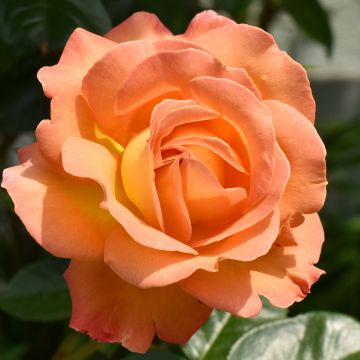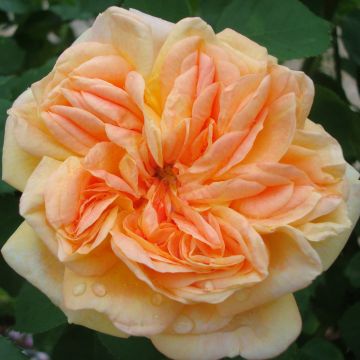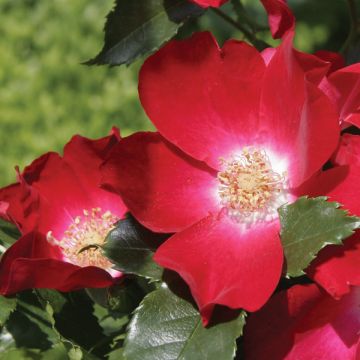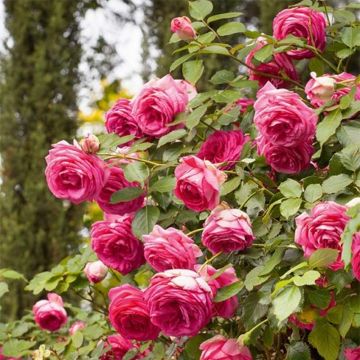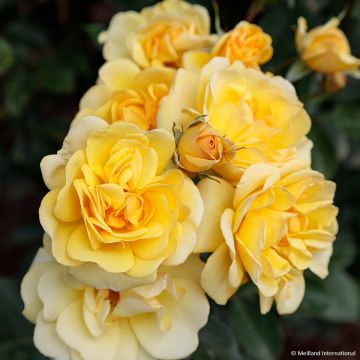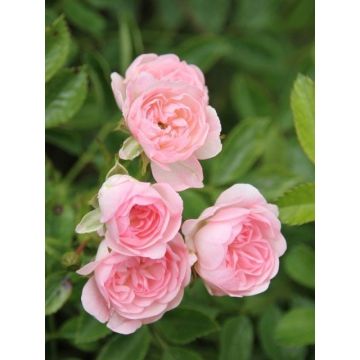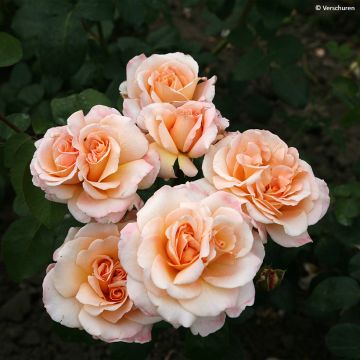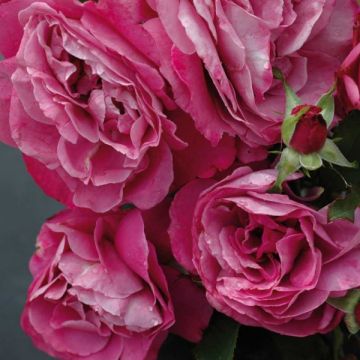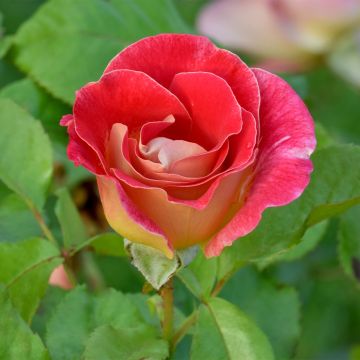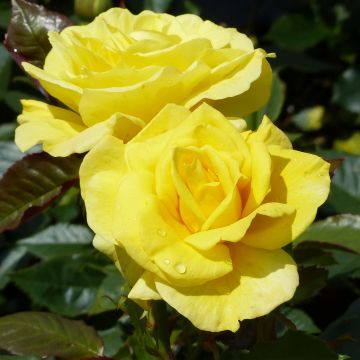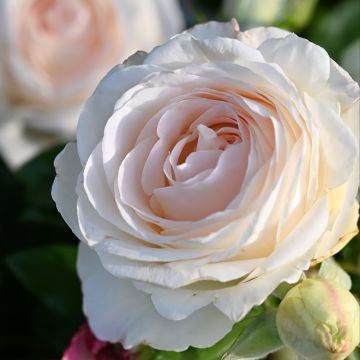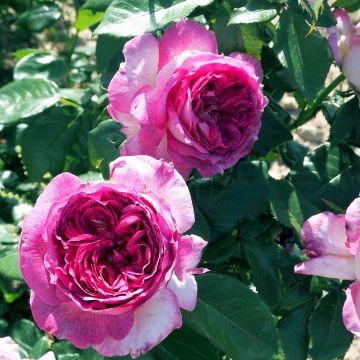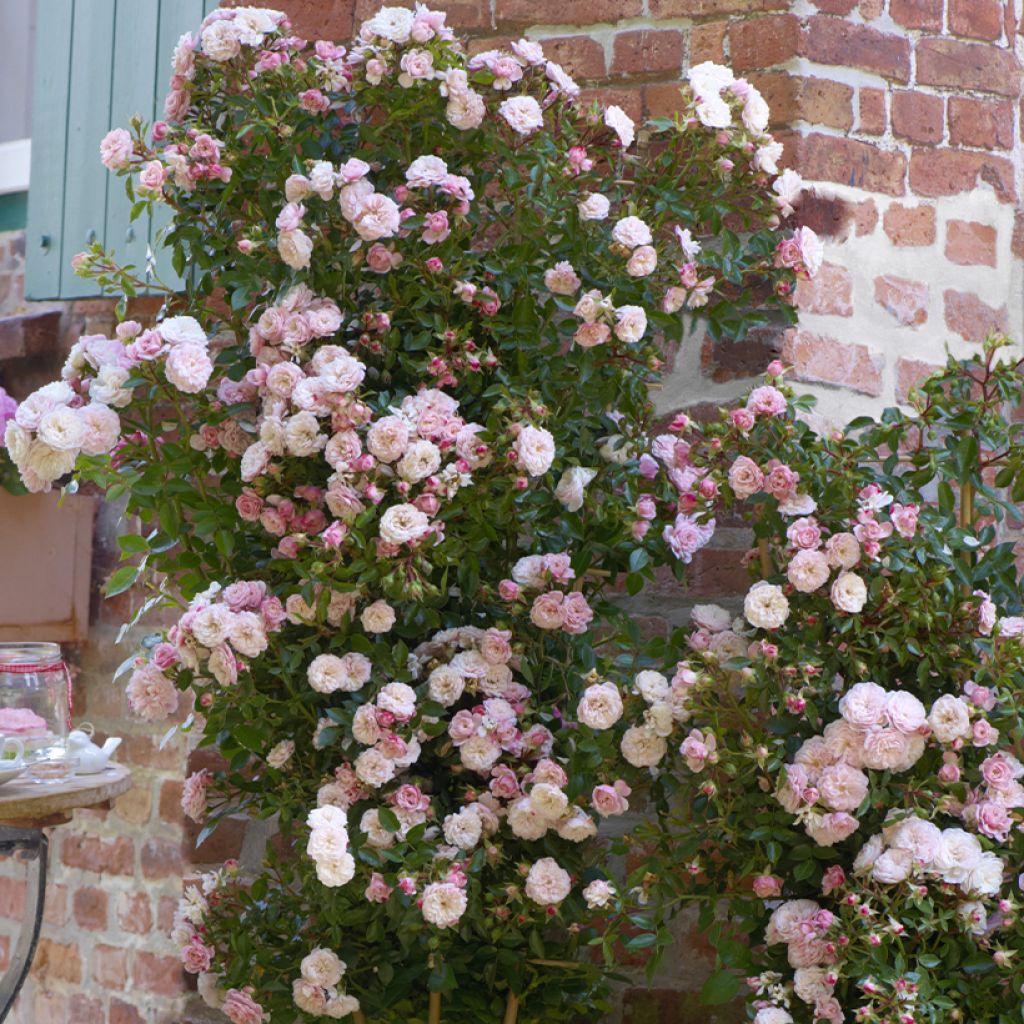

Rosier grimpant Alina
Rosa Starlet Rose 'Alina' - Climbing Rose
Rosa Starlet® Rose Alina 'Tan 07890'
Tan 07890
Small and in a sorry state plant (rare white leaves - disease?).
Aurélie, 18/09/2023
This plant carries a 24 months recovery warranty
More information
We guarantee the quality of our plants for a full growing cycle, and will replace at our expense any plant that fails to recover under normal climatic and planting conditions.
From €5.90 for pickup delivery and €6.90 for home delivery
Express home delivery from €8.90.
From €5.90 for pickup delivery and €6.90 for home delivery
Express home delivery from €8.90.
Does this plant fit my garden?
Set up your Plantfit profile →
Description
The Rosier Starlet Rose 'Alina' is part of a new generation of miniature climbing roses, the 'Starlets of the Roaring Twenties', well adapted for ornamenting terraces, balconies, and small gardens. Not very tall but vigorous and particularly floriferous, 'Alina' produces large bouquets filled with old-fashioned double roses that change colour throughout the day. From deep pink to rose to salmon, to pale yellow and finally cream white, they create a magnificent spectacle on perfectly healthy foliage. Their scent is rather strong, filling the air on warm and calm days.
The climbing miniature rose 'Alina' or 'Tan 07890' is part of the complex family of cluster-flowered roses. It is a recent creation developed in Germany by the rose breeder Tantau and distributed by Edirose. It is a sarmentous rose with a small habit. It has a flexible habit and thorny stems, reaching an average height of 1.75 m (6ft) with a spread of 1.50 m (5ft). Its foliage, composed of small leaflets, is a fairly shiny green and highly resistant to rose diseases. Flowering begins in May and continues until October as long as it is not lacking water. Its very double roses are grouped in large bouquets. Each rose, measuring between 5 and 7 cm (2 and 3in) in diameter, full of petals, opens almost flat. Their colour evolves as they mature, and their scent is medium to strong intensity.
The climbing miniature rose Alina can be trained on a trellis or a structure suitable for its size, in the ground or pots. It allows for creating delightful decorations throughout the summer and requires very little maintenance, except for regular watering in summer during hot and prolonged dry periods. Pair the floribunda roses or combine them with small-sized clematis such as 'Blue Pirouette' or 'Dancing Queen'. These small climbing roses also go well with phlox paniculata, delphiniums, digitalis, catmints, and tall baby's breath. Create beautiful bouquets with their flowers as well.
Report an error about the product description
Rosa Starlet Rose 'Alina' - Climbing Rose in pictures
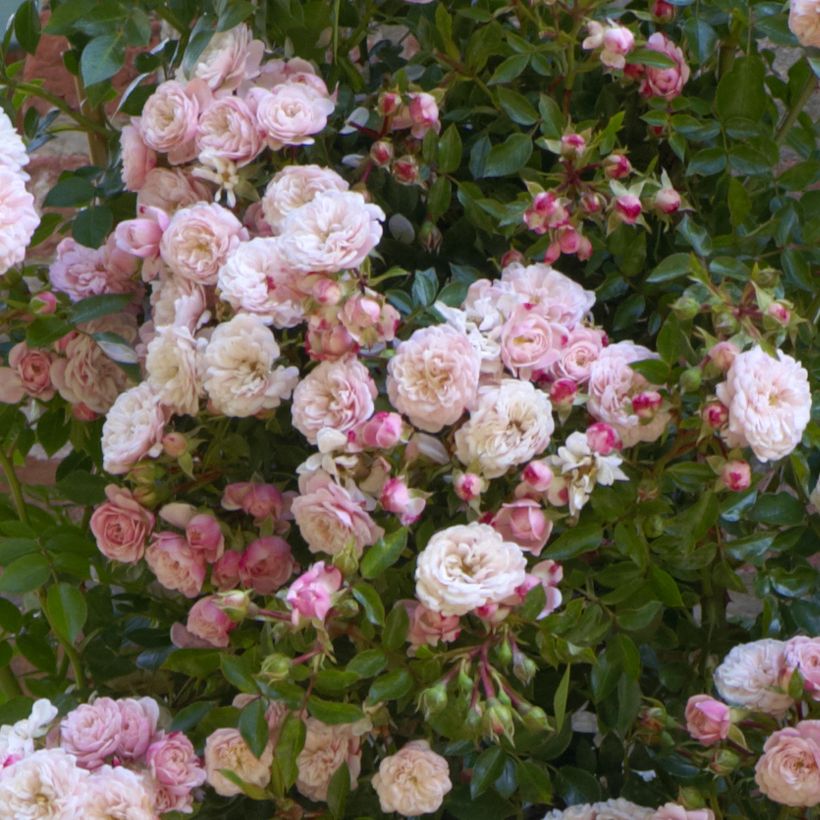

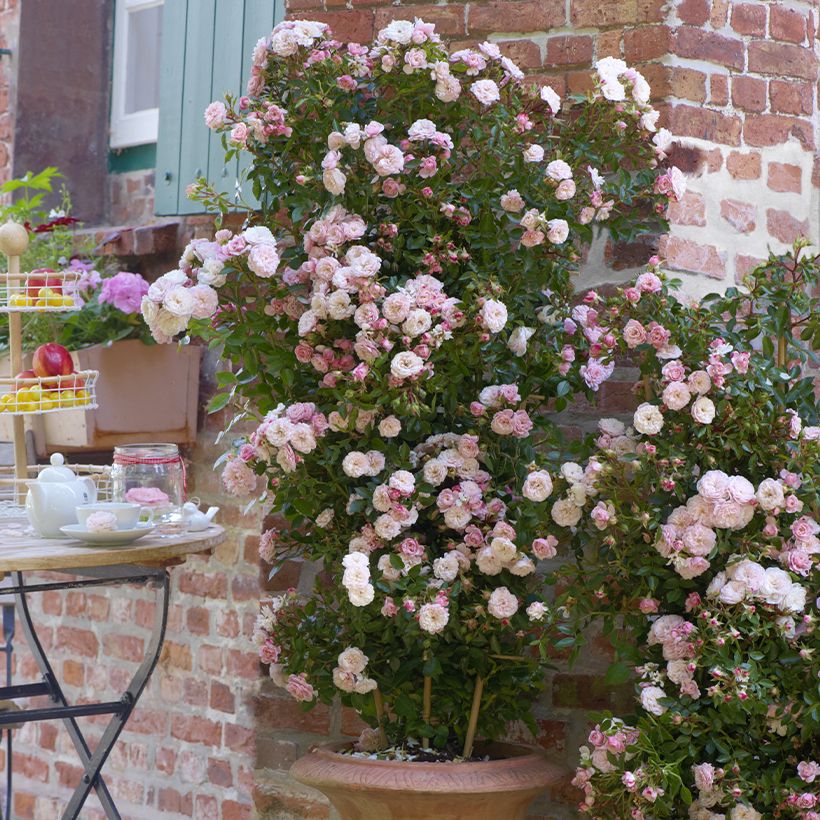

Plant habit
Flowering
Foliage
Botanical data
Rosa
Starlet® Rose Alina 'Tan 07890'
Rosaceae
Tan 07890
Cultivar or hybrid
Other Climbing Roses
Planting and care
If you're planting the 'Alina' rose, aim to do so between November and March in well-prepared soil. Roses prefer soil that's a bit clayey and heavier rather than too light. If your soil is sandy, compact, or dry during the summer, it's best to bury compost or well-rotted manure at the bottom of the planting hole. Plant the rose in a sunny spot, but if possible, provide it with some partial shade. To ensure repeat flowering, remove any faded flowers and make sure to apply a specific fertiliser at the beginning of growth and throughout the flowering period. If the soil becomes too dry during the summer, the flowering will decrease. To encourage growth, you should trim the stems by about a quarter of their length (from 4 to 6 buds from the base of the stem) in late winter. Always prune above an outward-facing bud so that the bush can fill out and the branches don't get tangled in the centre of the canopy. Floribunda rose varieties are more vigorous and floriferous than large-flowered rose varieties.
Roses may develop unsightly spots at the end of summer, but this is a natural occurrence and doesn't harm the rose's growth.
Planting period
Intended location
Care
-
, onOrder confirmed
Reply from on Promesse de fleurs
Roses by purpose
Haven't found what you were looking for?
Hardiness is the lowest winter temperature a plant can endure without suffering serious damage or even dying. However, hardiness is affected by location (a sheltered area, such as a patio), protection (winter cover) and soil type (hardiness is improved by well-drained soil).

Photo Sharing Terms & Conditions
In order to encourage gardeners to interact and share their experiences, Promesse de fleurs offers various media enabling content to be uploaded onto its Site - in particular via the ‘Photo sharing’ module.
The User agrees to refrain from:
- Posting any content that is illegal, prejudicial, insulting, racist, inciteful to hatred, revisionist, contrary to public decency, that infringes on privacy or on the privacy rights of third parties, in particular the publicity rights of persons and goods, intellectual property rights, or the right to privacy.
- Submitting content on behalf of a third party;
- Impersonate the identity of a third party and/or publish any personal information about a third party;
In general, the User undertakes to refrain from any unethical behaviour.
All Content (in particular text, comments, files, images, photos, videos, creative works, etc.), which may be subject to property or intellectual property rights, image or other private rights, shall remain the property of the User, subject to the limited rights granted by the terms of the licence granted by Promesse de fleurs as stated below. Users are at liberty to publish or not to publish such Content on the Site, notably via the ‘Photo Sharing’ facility, and accept that this Content shall be made public and freely accessible, notably on the Internet.
Users further acknowledge, undertake to have ,and guarantee that they hold all necessary rights and permissions to publish such material on the Site, in particular with regard to the legislation in force pertaining to any privacy, property, intellectual property, image, or contractual rights, or rights of any other nature. By publishing such Content on the Site, Users acknowledge accepting full liability as publishers of the Content within the meaning of the law, and grant Promesse de fleurs, free of charge, an inclusive, worldwide licence for the said Content for the entire duration of its publication, including all reproduction, representation, up/downloading, displaying, performing, transmission, and storage rights.
Users also grant permission for their name to be linked to the Content and accept that this link may not always be made available.
By engaging in posting material, Users consent to their Content becoming automatically accessible on the Internet, in particular on other sites and/or blogs and/or web pages of the Promesse de fleurs site, including in particular social pages and the Promesse de fleurs catalogue.
Users may secure the removal of entrusted content free of charge by issuing a simple request via our contact form.
The flowering period indicated on our website applies to countries and regions located in USDA zone 8 (France, the United Kingdom, Ireland, the Netherlands, etc.)
It will vary according to where you live:
- In zones 9 to 10 (Italy, Spain, Greece, etc.), flowering will occur about 2 to 4 weeks earlier.
- In zones 6 to 7 (Germany, Poland, Slovenia, and lower mountainous regions), flowering will be delayed by 2 to 3 weeks.
- In zone 5 (Central Europe, Scandinavia), blooming will be delayed by 3 to 5 weeks.
In temperate climates, pruning of spring-flowering shrubs (forsythia, spireas, etc.) should be done just after flowering.
Pruning of summer-flowering shrubs (Indian Lilac, Perovskia, etc.) can be done in winter or spring.
In cold regions as well as with frost-sensitive plants, avoid pruning too early when severe frosts may still occur.
The planting period indicated on our website applies to countries and regions located in USDA zone 8 (France, United Kingdom, Ireland, Netherlands).
It will vary according to where you live:
- In Mediterranean zones (Marseille, Madrid, Milan, etc.), autumn and winter are the best planting periods.
- In continental zones (Strasbourg, Munich, Vienna, etc.), delay planting by 2 to 3 weeks in spring and bring it forward by 2 to 4 weeks in autumn.
- In mountainous regions (the Alps, Pyrenees, Carpathians, etc.), it is best to plant in late spring (May-June) or late summer (August-September).
The harvesting period indicated on our website applies to countries and regions in USDA zone 8 (France, England, Ireland, the Netherlands).
In colder areas (Scandinavia, Poland, Austria...) fruit and vegetable harvests are likely to be delayed by 3-4 weeks.
In warmer areas (Italy, Spain, Greece, etc.), harvesting will probably take place earlier, depending on weather conditions.
The sowing periods indicated on our website apply to countries and regions within USDA Zone 8 (France, UK, Ireland, Netherlands).
In colder areas (Scandinavia, Poland, Austria...), delay any outdoor sowing by 3-4 weeks, or sow under glass.
In warmer climes (Italy, Spain, Greece, etc.), bring outdoor sowing forward by a few weeks.


































